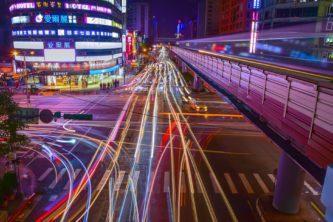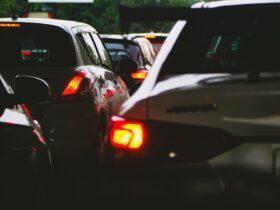In 2015, the Government of India launched ‘Smart Cities Mission’ as an urban renewal and retrofitting program, with a vision to develop 100 smart cities across India, to spur economic growth and improve the quality of governance and public life.
In a country of billions, intimately familiar with the challenges of travelling in crowded cities and a vast yet diverse geography, the concept of smart cities with fast mobility can sometimes seem unrealistic. But nothing can be further from the truth. With smart planning and deployment of intelligent technological solutions such as electric mobility, Cloud-based digital controls, advanced AI tools, we can turn this formidable vision into reality.
Data, Location and Location Intelligence
Every city usually has access to large amounts of valuable operational data whether it is related to urban planning, public safety, healthcare services, traffic controls, etc. When we consider the current technological developments, the maxim- ‘data is the new oil’ stands true. It intersects across various components of planning and management.
Moreover, since so much of planning and management is ‘location-centric’, accessing and understanding location related data is and can drive easy and intelligent mobility- one of the foundations on which a smart city is built. For e.g.- In Danang, Vietnam, smart cameras and sensors have been deployed to monitor traffic, manage road safety and inform future city planning. Closer home, Pune in India is an example of how mobile network data can be used to gather information on public habits and infrastructure usage.
Let’s look at how Location Intelligence, when incorporated into business intelligence across verticals, can help shape the future of intelligent mobility in India:
Shared mobility
Over the last few years, owing to rapid urbanization, traffic congestion, distressing parking fees and a surge in new-app based mobility solutions, we have been witnessing a shift in car-ownership to greater use of shared transportation.
Experts argue that buyers, especially younger ones, don’t necessarily want to be bogged down with owning a vehicle. If industry estimates are anything to go by, India is predicted to be the leader in shared mobility by 2030. For businesses providing private mobility and shared cab services, this presents a huge opportunity to deliver more personalized and on-demand customer services using maps, embedded connectivity, location data on road conditions, weather fluctuations, visual routes, reduced travel time, etc. Companies could also identify major gaps in their existing infrastructure in specific locations and introduce value added ‘on-demand’ services such as food delivery or courier.
Public Transport
The coming years will see Location Intelligence change the face of public transportation systems. At present, the urban satellite town of Maharashtra; Navi Mumbai, has deployed real time data driven Integrated Intelligent Transport System (IITS) that has eased bus travel woes. This includes a mobile app that informs travelers of the nearest bus stations and helps them track fastest routes.
On the other hand, it helps authorities to track buses that skip stops and act. In such a situation, Location Intelligence could have wider applications for the public transport sector. It can help visualize the movement of people, when a road is closed for maintenance, while at the same time offer predictive models that can be used to show what will happen the next time, the road closes.
AI based predictive maps could help drivers to reduce journey time or calculate the optimal traffic signal timing. Leveraging rich GPS analytics and high-definition maps could provide insights to plan better pedestrian walkways and provide alternative travel modes such as ‘stairs’ or ‘elevators.’
Logistics & Fleet management
Logistics sector is important for a country’s GDP as it facilitates movement of goods and services from one geography to another. Given that logistics optimization is always a complex equation, Location Intelligence and spatial data can be leveraged to build predictive data models that can provide insights on road restraints, define alternative distribution routes and warehouse capacity limits, thus reducing fuel cost and time to last mile delivery.
Organizations can also use sensors and fleet management applications to monitor and coach driver on driving behaviors and compliance with road safety regulations, thus minimizing any human or goods damage.
Healthcare & citizen services
A few years back, Jill Hubley, a web-developer created a detailed interactive atlas, mapping all the species of trees present in New York. What emerged from her work is a kaleidoscope of colors and fascinating look at the city’s biodiversity that is now used to plan and maintain the city’s green cover.
This indicates how location mapping and intelligence platforms can enable governments and civic bodies to plan better delivery of public welfare and healthcare services. Using city data and real-time mobility streams, civic bodies could also be alerted about accidents live, allowing emergency services team to respond faster, and thus improving governance and public life on roads.















